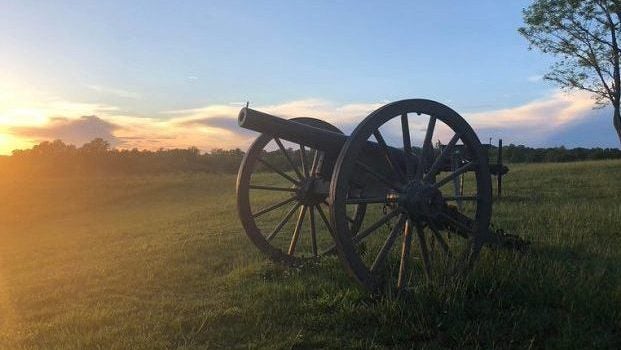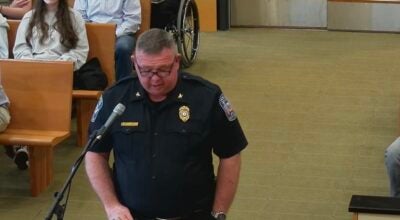History’s lesson: VFW offers Memorial Day tribute at Sailor’s Creek
Published 9:06 am Monday, May 29, 2023

- A look over the battlefield at Sailor's Creek.
|
Getting your Trinity Audio player ready...
|
After the battle of Sailor’s Creek, Union Cavalryman Joel Swett found a piece of paper lying near a dead Confederate soldier. It was a letter the man had written to his wife in Farmville, saying goodbye as he didn’t expect to live through the fight. Swett kept the letter and took it upon himself to deliver it.
“I took this letter and in passing through Farmville, ascertained the residence of his wife,” Swett later wrote. “(I) delivered the letter to her, directing her where the body might be found.”
This story was one of several that retired U.S. Air Force (USAF) Col. Greg Eanes shared during the Memorial Day tribute at Sailor’s Creek Battlefield State Park over the weekend. Speaking on Saturday, May 27, Eanes pointed out that even though soldiers were on opposite sides, that didn’t stop them after the battle was over from showing humanity. The senior vice commander for the fourth district of Virginia’s Veterans of Foreign Wars (VFW), Eanes said as people pay tribute to those who died at Sailor’s Creek, we as current residents need to follow the example set.
“For many of us, Sailor’s Creek Battlefield State Park is a living memorial to all of them,” Eanes said, speaking of the soldiers who fought and died. “In many ways, it is a memorial to reunion and reconciliation. As citizens and elected officials, we can learn from the example of these veterans. And we should strive to emulate that example.”
That means respecting each other, treating people with respect, Eanes said. It means even in disagreement, acknowledging the other person is a human as well.
“The veterans respected each other’s suffering and sacrifice,” Eanes said. “Their memory is worth preserving, protecting, and honoring.”
A tie to Hampden-Sydney
Lockett House still has physical reminders of the battle. The structure at Sailor’s Creek still has 32 bullet holes, each telling a visual story. And, as Eanes pointed out, we have written reminders from some of the survivors, filling in details of the story.
One specifically came from Samuel Vaughan Wilson. If that name sounds familiar, it’s because he’s the former president of Hampden-Sydney College and before that, a lieutenant general in the U.S. Army.
Wilson’s great-aunt, ‘Mamie’ Lockett Garnett, lived through the battle at Sailor’s Creek and shared what she witnessed with nine-year-old Wilson, who wrote about those stories later in life.
Garnett lived in the Lockett House, which served as a field hospital for both blue and gray during the battle. She was six years old on April 6, 1865, the day of the battle.
“She would tell how she “hunched down” on the floor and watched the wounded being
brought into the house,” Wilson wrote. “She pointed to a spot on the floor where a Union Captain bled to death. She said, “…his left leg had been shot almost plumb off, and the only thing holding it was what was left of his boot.”
Wilson said when Mamie talked of the battle, she’d point to another spot on the floor. That came from a Confederate soldier, no more than 12 or 13 years old.
The point, Eanes said, comes later in Mamie’s story. When she would talk about the battle, she would show the spot on the floor where the two bloodstains overlap.
“That’s how our country came back together,” Wilson recalled Mamie saying.
What happened at Sailor’s Creek
While we’ve talked about what happened after, some readers may not know the Sailor’s Creek story. Following a fighting retreat that started about 8 a.m. near Amelia Springs, Lt. Gen. Richard Ewell of the Confederate army and his troops were cut off on April 6, 1865 by Union cavalry at Harper’s Farm. Many people better know that spot now as Marshall’s Crossroads. Due to the Union cavalry, there was a roughly two-mile gap between Ewell and other Confederate troops. Union Gen. George Custer and his men rode into that gap, with Union Gen. Horatio Wright’s Sixth Corps attacking from the east.
There were three battles in and around Sailor’s Creek on April 6, as Union forces divided the Confederates from each other. Those battles resulted in 7,700 Confederate soldiers and eight Confederate generals being taken prisoner. That, combined with a lack of supplies, helped lead to Gen. Robert E. Lee’s final surrender at Appomattox and the end of the Civil War.




